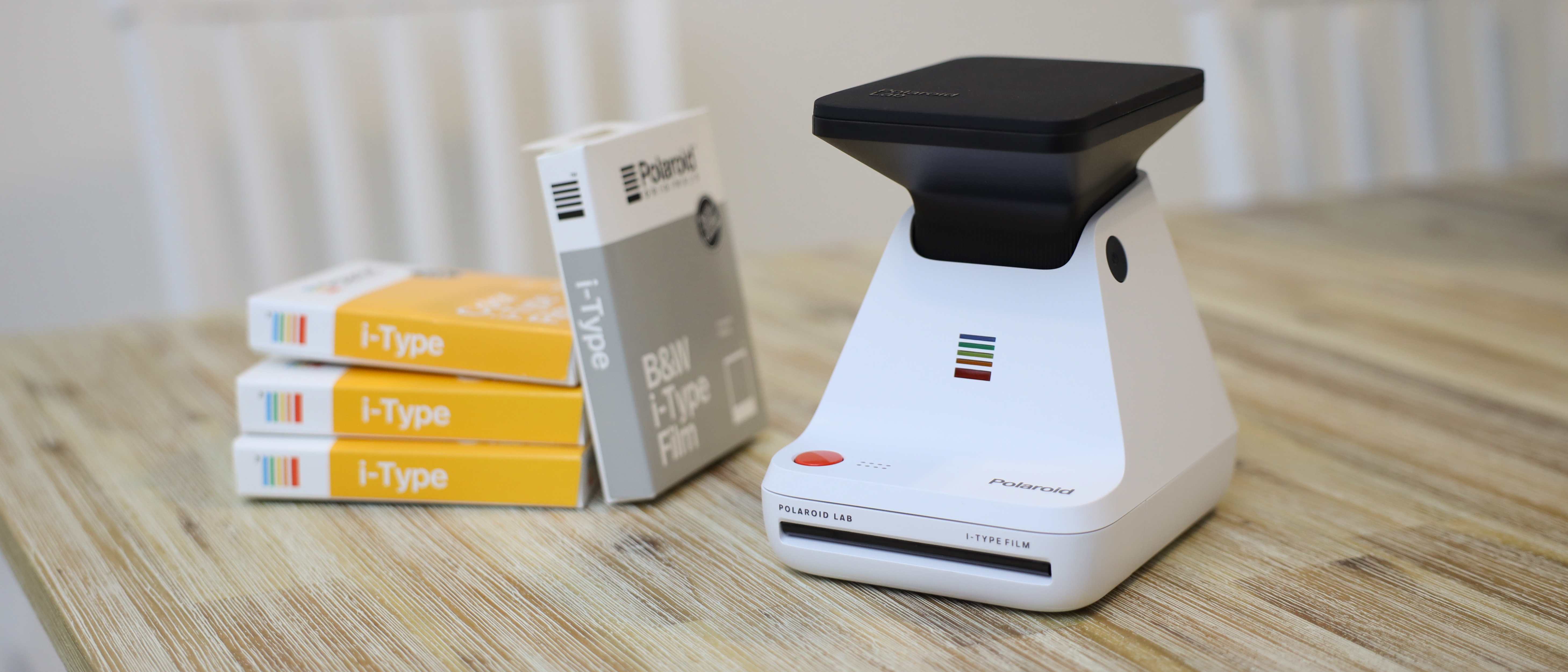Digital Camera World Verdict
Where other instant film printers and ZINK printers simply reproduce a digital file, the Polaroid Lab creates authentic analog exposures using a lens and a genuine photochemical process. The results aren't exact reproductions of your original images, but are arguably something more – something charming, something flawed, something absolutely unique. Throw in the augmented reality features and the Polaroid Lab goes beyond gimmickry and is truly joyful – and a true photographic experience.
Pros
- +
Black & white images look great
- +
Real Polaroid photochemistry
- +
Augmented reality is brilliant!
Cons
- -
Color images are inconsistent
- -
Details can be washed out
- -
Jams just like a real Polaroid
Why you can trust Digital Camera World
The Polaroid Lab is a great idea. Its intention is to liberate your photographs from the cavernous folders of your smartphone, turning them into real Polaroid film prints so that they can actually be seen, shared and enjoyed, rather than being lost in the limbo of your handset.
It also promises a fun way to showcase your "proper" photography, enabling you to produce authentic Polaroid prints of your images shot on DSLRs or mirrorless cameras, giving you a creative way to present your work.
There are similar instant film printers available from Fujifilm, of course, such as the newly launched instax Mini Link, which produce authentic instax film prints of photographs beamed from your smartphone.
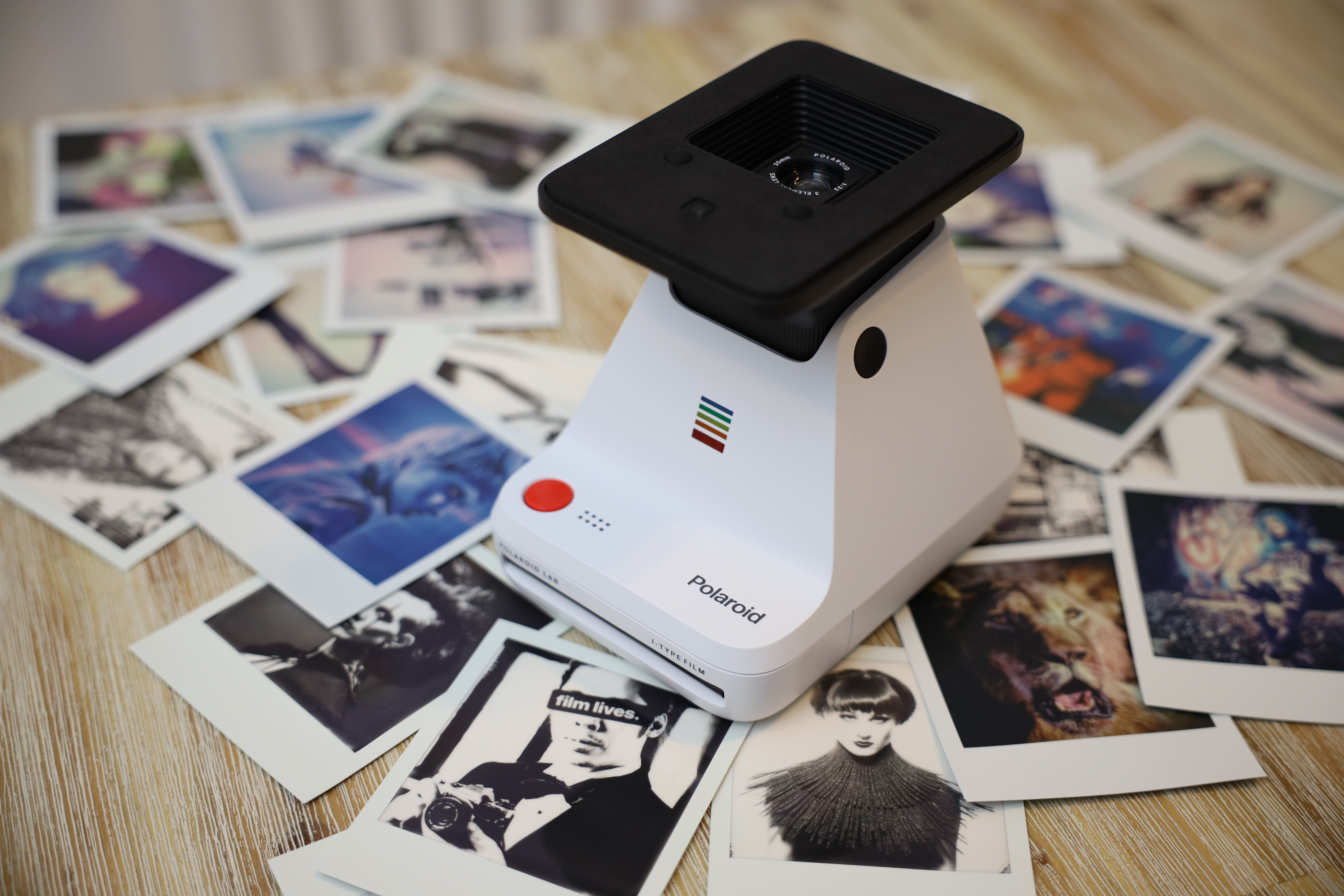
However, Fujifilm's offerings differ in two key ways: they only print on credit card-sized instax Mini film (with a print area of 46 x 62mm), and the images are received and processed digitally via Bluetooth. And herein lies the rub.
First, the good: Polaroid Lab uses full-size 600 / i-Type square film (print area 77 x 79mm), which results in images that are roughly 53% larger. Then the bad, or at least baffling: Polaroid Lab doesn't receive and print a digital file, instead it actually takes a photograph of your phone screen.
Does the resulting images hold up, or is taking a photograph of a screen just a really bad idea? The proof is in the pudding, so let's lay the cutlery…
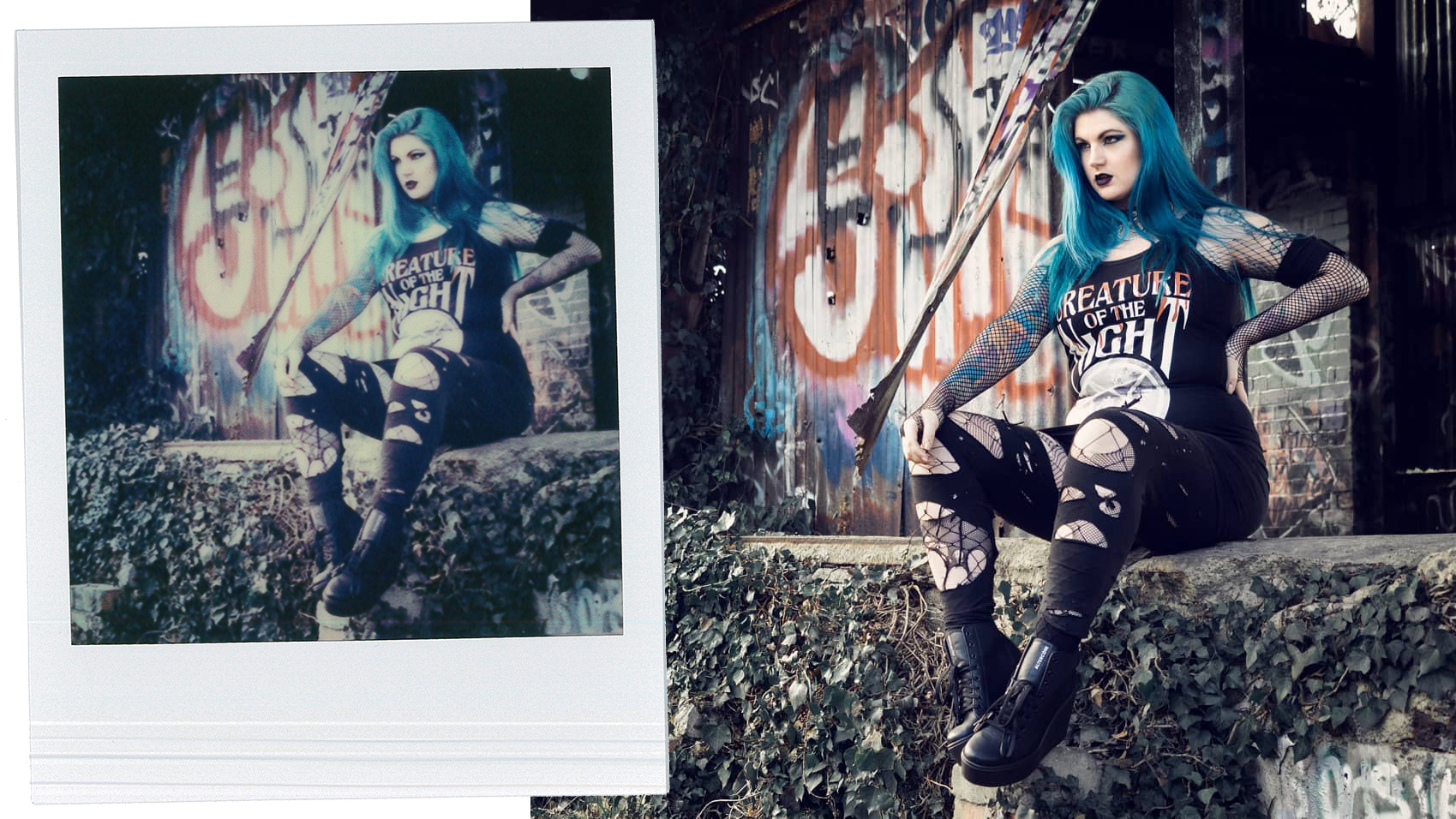
Key features
The Polaroid Lab is basically a Polaroid Originals camera without a viewfinder or flash, featuring a 5-element 35mm f/33 lens. And like all Polaroid Originals cameras (not to be confused with original Polaroid cameras), it accepts both 600 and i-Type film – SX-70, 8 x 10 and the recently discontinued Spectra won't work.
Something else that won't work with the Lab are older, smaller models of phone. This reviewer uses an iPhone SE (I have arthritis, so big screens are uncomfortable), but this is too small to work with the device. it requires a minimum 4.7-inch screen – that's means an iPhone 6 and above, and most Android phones.
Admittedly this won't be an issue for most people with modern phones, but it reinforces what a curious decision it is to have the Polaroid Lab actually take a photo of a phone screen, rather than just have a digital image beamed to it – especially as it requires the iPhone Originals App (iOS 11 or Android 7 and above).
Of course, that ostensibly comes down to the fact that the Lab employs "100% real chemistry" to produce authentic Polaroid prints by optically capturing your images through a true analog process.
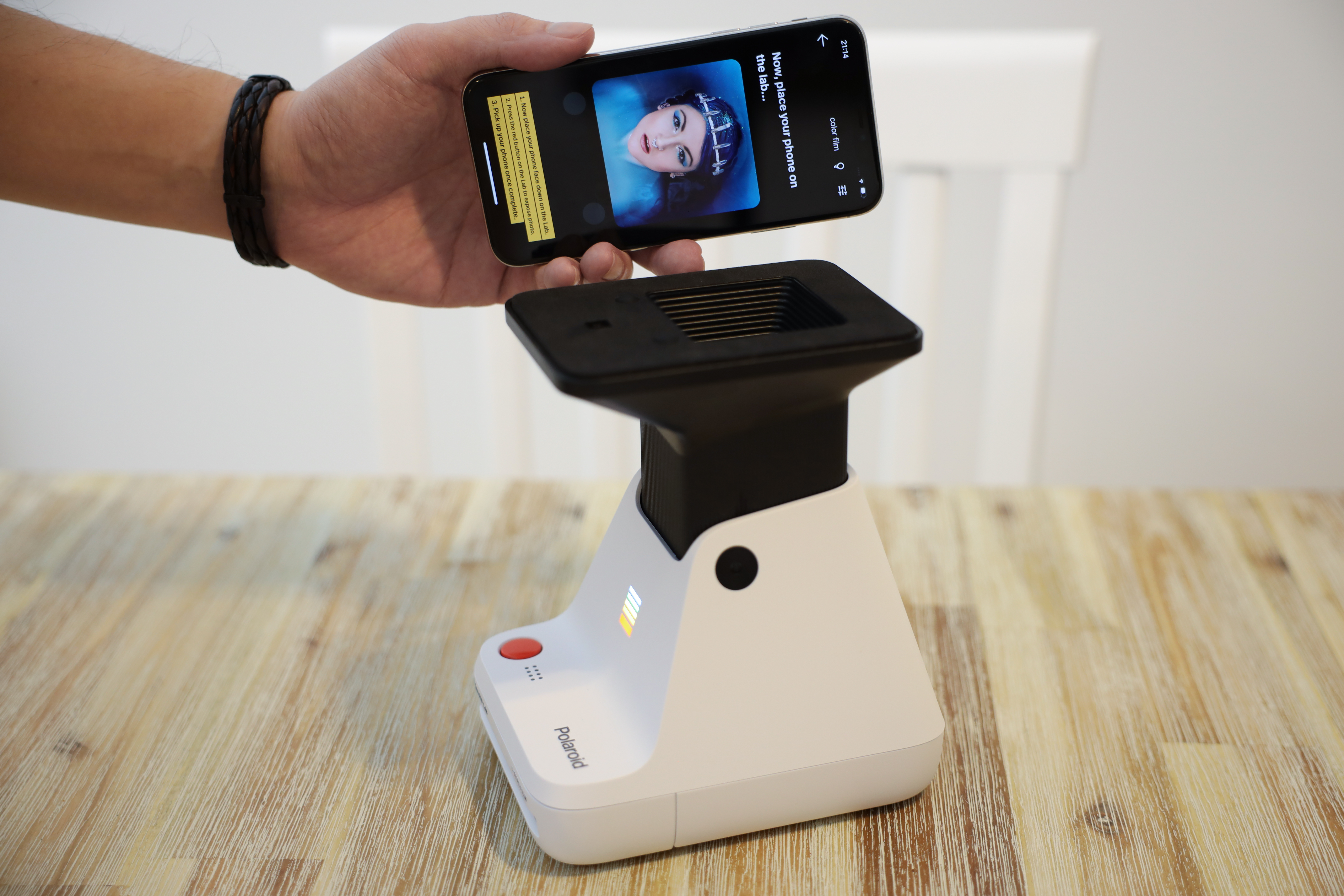
Build & handling
Peculiar as its method might be, the Polaroid Lab is undoubtedly a beautifully crafted bit of kit. It comes in suitably slickly designed Polaroid Originals packaging and the unit itself has been carefully crafted to be pleasingly free of corners and harsh edges.
Its sleek retro-modern minimalist design is solid and sturdy, with a push of a button on the side elevating the lens platform and turning the device on. Instead of pointing the lens at your subject, you place your "subject" (your already-taken photograph, on your smartphone) on the lens tray.
From there, the Lab communicates with your phone (though no pairing or connection is required) to establish whether the screen is in the correct position. The Polaroid Originals rainbow logo will confirm that it's ready to go, then it's a simple case of pressing the big red button to take an exposure.
Like true Polaroid Originals cameras, it has eight mini-LEDs to indicate how many exposures are left on your current pack of film, which loads and ejects from the underslung tray as you would expect. It's worth noting that the very first pack of film we put through the Lab jammed on us, and we had a couple of other misfires too.
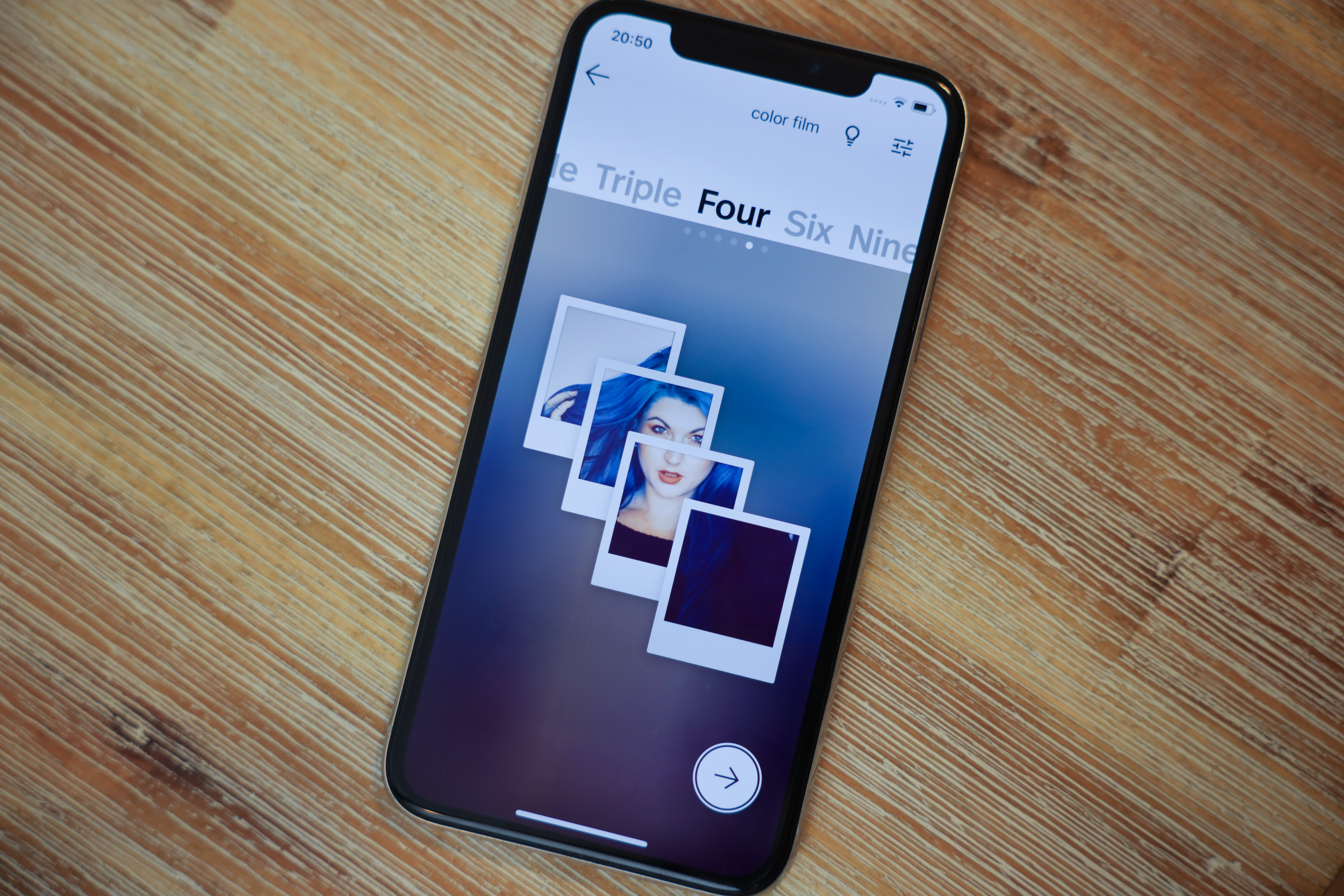
Performance
The first part of the process is to load up the Polaroid Originals App, which is exceedingly well designed – even though it lacks some key functionality. Here you select whether you're using color or black-and-white film, and then choose the photo you wish to print.
Here, at least in the beta version of the app that we tested, is the first small hurdle: there's no way to crop images into the square Polaroid format. So if you have a landscape image with your subject to one side, you have to zoom into the photo (chopping off the top and bottom of the frame, and likely your subject's face) rather than being able to crop a square image that keeps the subject intact.
Of course, you can easily crop images in your phone's native photos app or an image editor, but that requires dropping out of the Polaroid app and having to find the picture all over again from whatever folder it was in. It's a bit of a faff, so make sure to square-ify any pics before playing with the Lab.
Now you can make simple tweaks to the image's exposure and color, as well as choose whether you want a single square Polaroid print or if you want to use multiple (two, three, four, six or nine) prints to create a collage using the same image. This is one of the app's coolest features, enabling you to create landscape, portrait, exploded views or simply tiled enlargements of your photograph.
If making a single print, you also have the option to add a piece of augmented reality media (see video above). Now, bear with us here – we thought this was just going to be a trashy gimmick, but it's actually really neat.
By adding a photo or video (either a new one using your phone camera or an existing one that you've saved) to the image you're printing, somebody else can use the Polaroid Originals App to look at the print and it will then use AR to superimpose the photo/video into the Polaroid frame.
If you take someone's photo at a wedding, for example, you can record your own personal message to them so that whenever they look at the Polaroid using the app, your message will play. Or if you're at a sporting event or festival, you can add a video to the photograph to capture the feeling of being there – it's such a brilliant idea, and it's brilliantly executed.
What isn't always brilliant, however, are the resulting prints. Like taking a real Polaroid photograph, the images are sometimes stunning and sometimes disappointing – so at least it's a true and fair reflection of instant photography.
We've noticed a particular disconnect between using black-and-white film and using color film – especially using color to print black-and-white images.
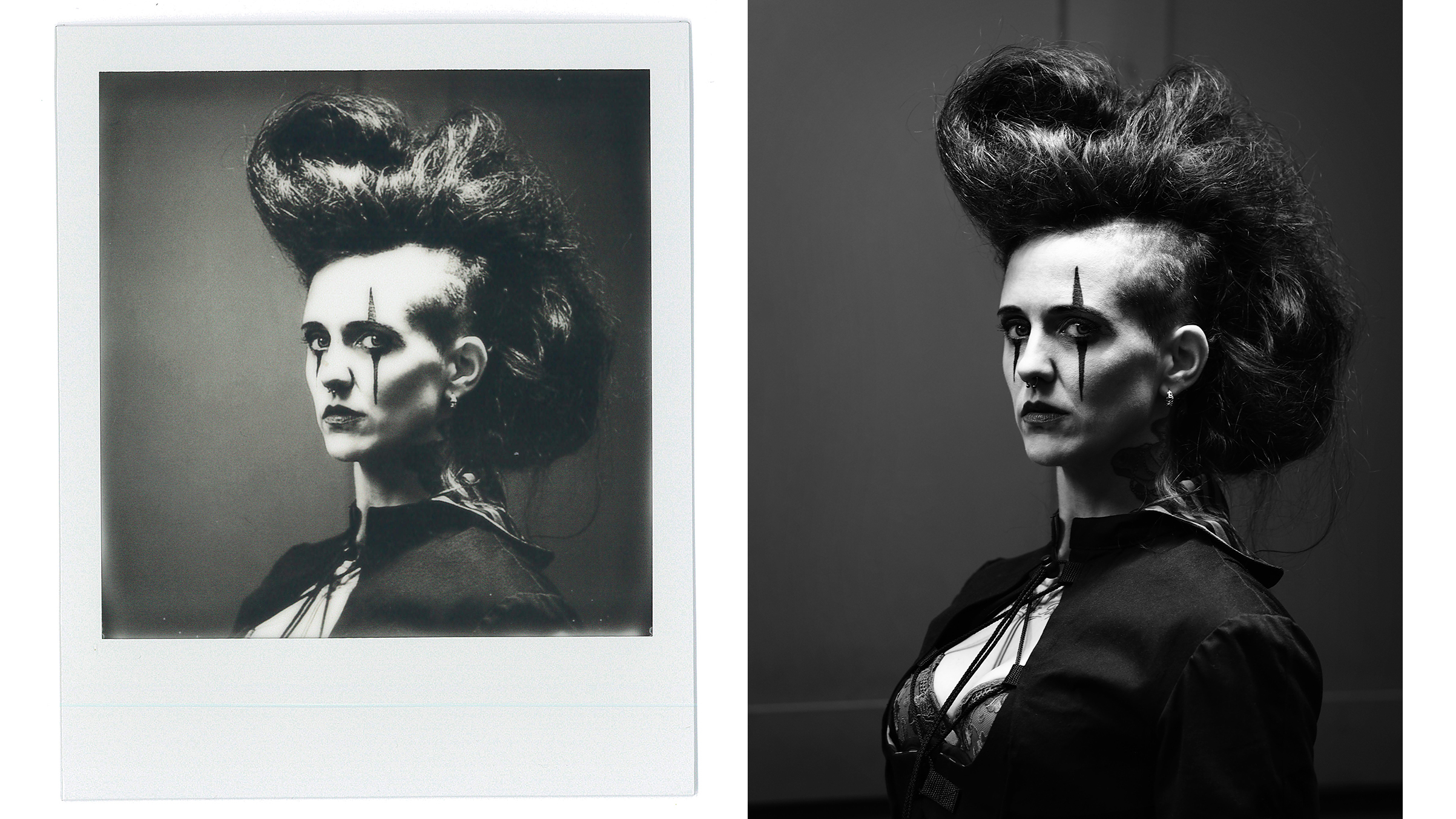
In the main, we were overwhelmingly happy with the quality of shots that the Polaroid Lab produced on mono film. Dark, contrasty images tend to work better than lighter, whiter images with subtle tonality, but on the whole they were crisp, crunchy, sharp and simply a joy to look at.
However, things were a bit more hit-and-miss when using color film – and our biggest takeaway is that you really, really shouldn't use it to print mono images. This betrays a unique artifact whereby large areas of white are contaminated by a red-blue "wash".
Whether it's the result of the chemistry of color Polaroid film or a byproduct of the Lab taking a photograph of a color screen and misinterpreting the RGB information of the individual pixels, this "wash" looks ghastly on mono images – and the same phenomena is also present on color images bearing large expanses of white.
It's undoubtedly part of the charm of Polaroids that they have an ethereal haze of color disunity, but it feels distinctly unnatural to see it added to images when you know what they're supposed to look like. In addition, brighter areas of prints tend to appear overexposed and lose both sharpness and detail.
Where color prints are far more successful, however, is in darker images or those with a red/magenta/cyan/blue palette. Some of our results were very pleasing, and when the process worked it really worked – but color film definitely requires more consideration than black-and-white.
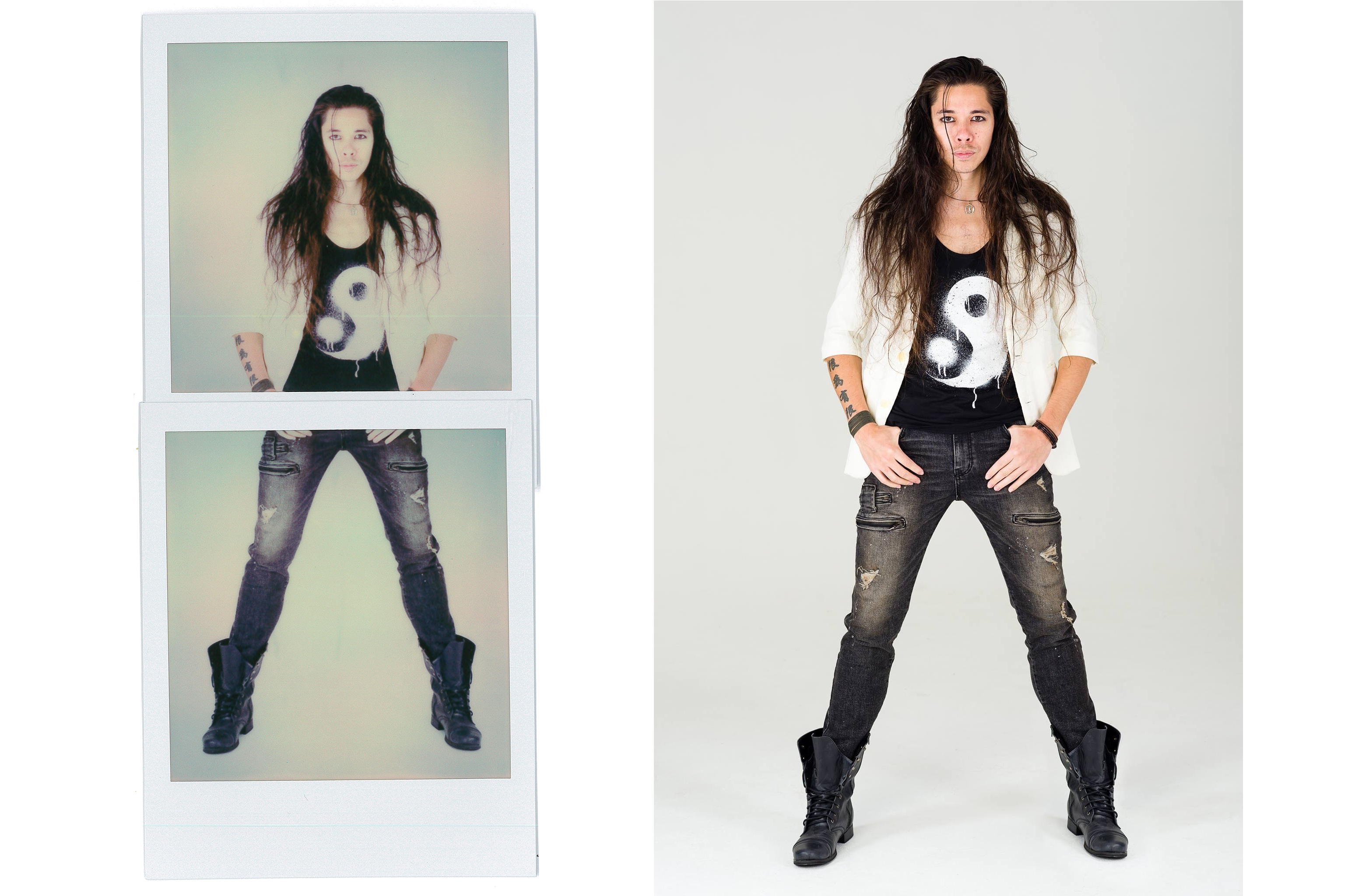
Verdict
Of course, these quibbles aren't entirely fair; the Polaroid Lab isn't simply a printer, intended to reproduce the pictures on your phone, it's an actual camera that uses a genuine photochemical process to give you an authentically exposed instant print of your images.
Color haze and washed-out detail are part of that process, and a large part of the charm of instant photography. If you want an exact, color- and detail-precise reproduction of your photos, you would be better served looking at some of the best portable printers.
However, if you want to transform your smartphone snaps – and, indeed, your "proper" photographs – into real Polaroid prints with all the charm and character as if you'd taken them on an instant camera, the Polaroid Lab is a fantastic and fun device – especially with its sure-to-be-dismissed augmented reality features, which we think are among the device's real highlights.
It's funky, it's flawed and it's unashamedly photochemical.
Read more:
Best portable printers for photos
The best instant camera in 2019: perfect for party season!
The best camera phone in 2019: which is the best smartphone for photography?
The best film camera in 2019

James has 22 years experience as a journalist, serving as editor of Digital Camera World for 6 of them. He started working in the photography industry in 2014, product testing and shooting ad campaigns for Olympus, as well as clients like Aston Martin Racing, Elinchrom and L'Oréal. An Olympus / OM System, Canon and Hasselblad shooter, he has a wealth of knowledge on cameras of all makes – and he loves instant cameras, too.
